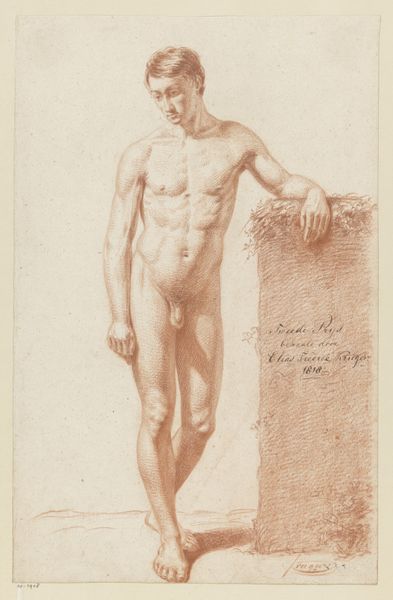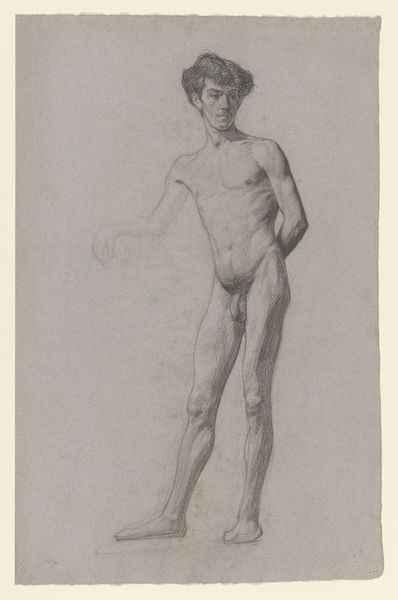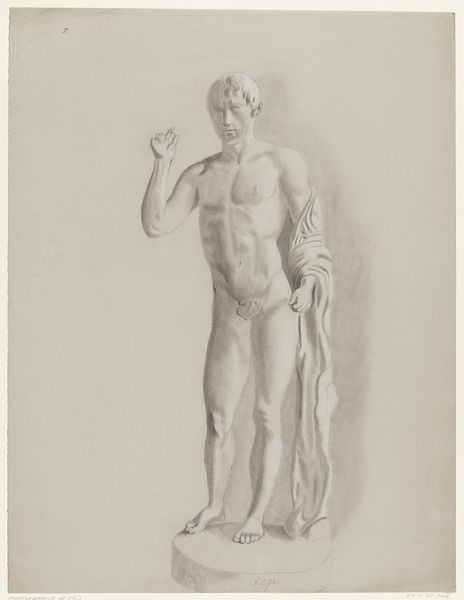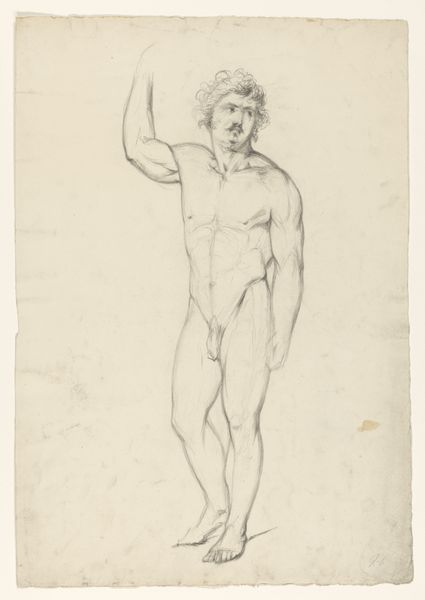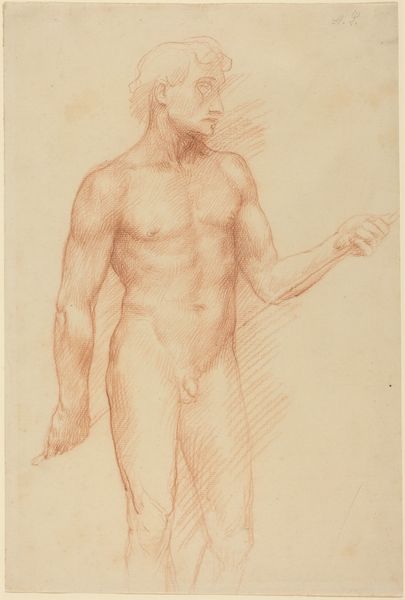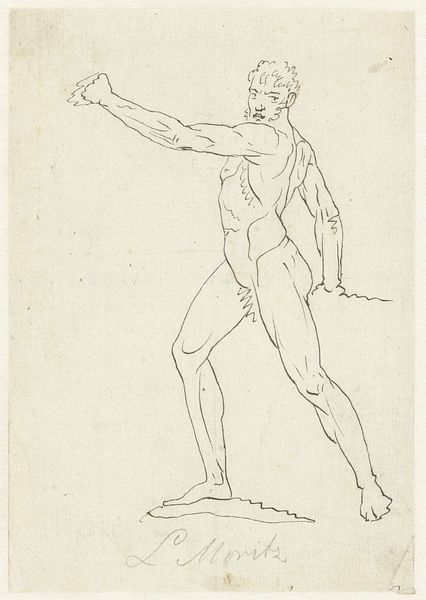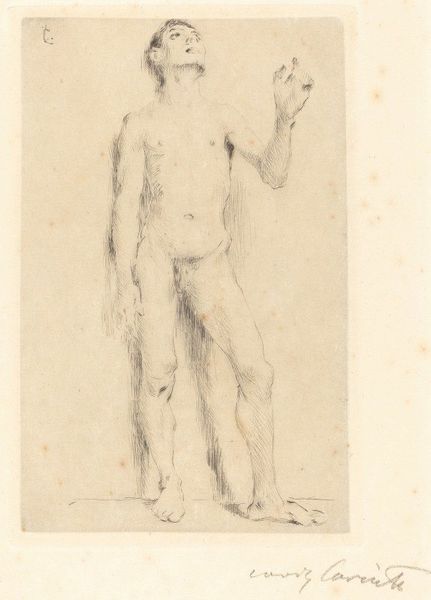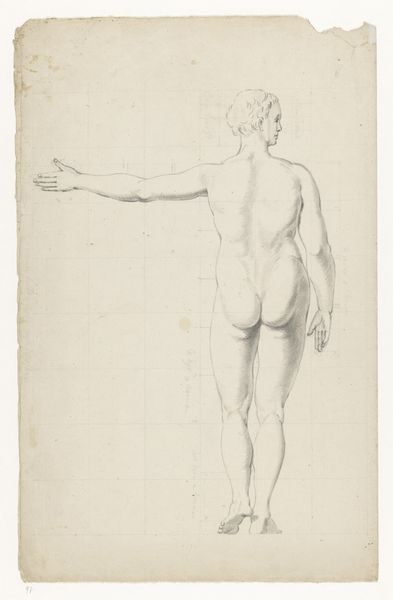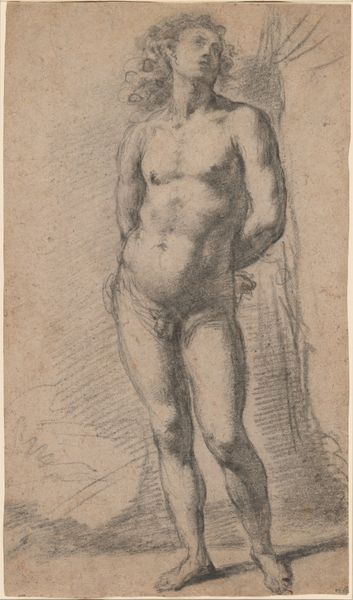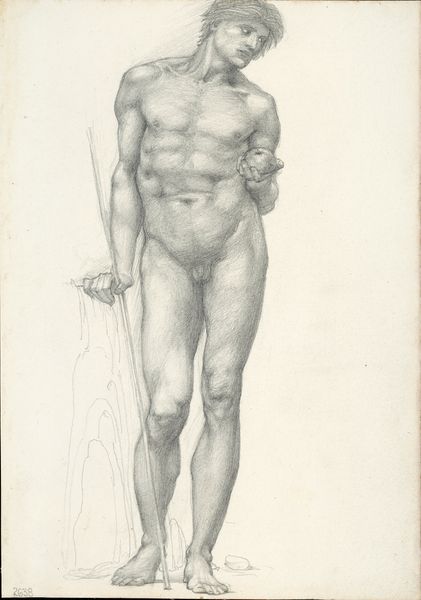
Gips van een antiek beeld van een staande naakte man Possibly 1827
0:00
0:00
johannestavenraat
Rijksmuseum
drawing, pencil
#
portrait
#
pencil drawn
#
drawing
#
pencil sketch
#
classical-realism
#
figuration
#
pencil drawing
#
pencil
#
academic-art
Dimensions: height 475 mm, width 335 mm
Copyright: Rijks Museum: Open Domain
Editor: Here we have "Gips van een antiek beeld van een staande naakte man," which translates to "Plaster cast of an antique sculpture of a standing nude man," made with pencil around 1827 by Johannes Tavenraat. I'm struck by the almost melancholic pose and how softly rendered it is with the pencil. What catches your eye? Curator: The pervasive presence of the Classical nude figure, repeated through countless generations of art, points to more than just artistic aspiration. This echoes a deep cultural memory – an association with ideal beauty, intellectual prowess, and civic virtue inherited from the ancient Greeks and Romans. Editor: That makes sense, given it’s a plaster cast of a classical sculpture, but I'm still interested in the melancholic feel of the drawing. Curator: Observe how the figure's head is tilted downward. The eyes aren't visible. What might that averted gaze signify, especially considering the historical and cultural context? Editor: Maybe it’s humility, or reflection, since these nudes were originally associated with Gods and heroism, perhaps? Curator: Exactly. The artist may also subtly undermine the grandiose claims of earlier eras, even while acknowledging the legacy through which he and his audience understood the world. It speaks to how classical imagery was constantly reinterpreted and adapted. Do you find that it succeeds as a reinterpretation? Editor: It’s certainly given me a different way of looking at it, past just being a copy of another sculpture! Thanks for highlighting the different interpretations this work can take. Curator: It also reminded me how much we continue to return to these historical styles for meaning.
Comments
No comments
Be the first to comment and join the conversation on the ultimate creative platform.
